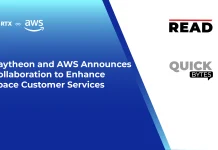Ionblox, a leading innovator in charging technology, announces the launch of ultra-fast charging lithium silicon cells designed for electric vehicles (EVs). did. By leveraging silicon’s superior energy storage capabilities, our new cells significantly reduce charging times while increasing range, delivering significant performance and efficiency gains for EV manufacturers.
Ionblox technology enables ultra-fast charging (XFC), delivering 60% of the battery’s capacity in just 5 minutes and 80% in 10 minutes. These technological advances make it possible to charge an electric vehicle in roughly the same amount of time it takes to fill up a tank of gas, effectively eliminating one of the main barriers to EV adoption. Ionblox’s high-energy cells also allow EV manufacturers to increase EV range by 30% to 50% using the same size battery pack or reduce weight and cost by using a smaller battery pack. I can.
“The battery industry has long grappled with the critical challenge of balancing high energy storage and fast charging in a single durable battery,” said Dr. Herman Lopez, Chief Technology Officer at Ionblox. I am. “Our breakthrough lithium-silicon technology breaks through that barrier. We designed a cell that effectively bridges the performance gap between electric and internal combustion engine vehicles.”
Ionblox’s lithium silicon cells not only charge more efficiently, but maintain performance throughout the vehicle’s lifecycle. High Capacity 32Ah Pouch Cell In rigorous testing, Ionblox batteries can withstand over 1,000 ultra-fast charging cycles with limited degradation. This is made possible using a patented pre-lithiated silicon monoxide anode and a unique cell design that can be built with conventional cell manufacturing equipment.
In 2022, Ionblox signed a new agreement with the United States Advanced Battery Association (USABC) to develop low-cost, fast-charging silicon-based cells for EVs. We have received a strategic investment from Lilium, a leading eVTOL company. Our ultra-fast charging technology allows eVTOLs to fly multiple times a day, increasing the amount of time aircraft spend in the air.
SOURCE: BusinessWire




